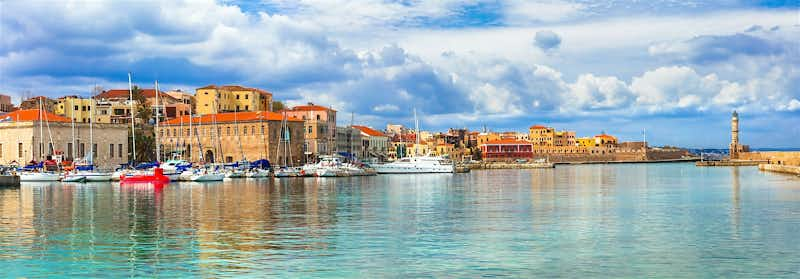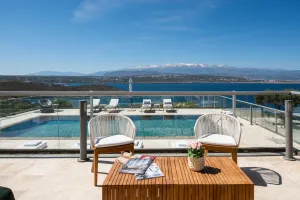The Venetian Harbor
The Venetian Harbor of Chania dates back to the 1320s and the Venetian occupation of Crete. The port falls within the Byzantine fortification walls built in the 6th and 7th centuries, an area of Chania declared a protected historical monument in 1965, and is considered the most beautiful Venetian harbor in the Med. This historical landmark comprises two sections; the west basin is where goods were unloaded from boats and ships, and stored in warehouses; the east basin was essentially the docklands, referred to as the ‘Arsenali’ due to the arsenals lining the dock, used for vessel maintenance and repairs. Be sure to visit the Nautical Museum, which is located in the Firkas Fortress, and see the Minoan ship replica at the Moro Docks. There is a beautifully restored lighthouse on the right-hand breakwater of the harbor for tourists to visit, as well as many dockside cafés, restaurants, and bars to enjoy.
Elafonisi
Elafonisi, which translates to "Deer Island", is located close to the southwestern corner of Crete and falls under the administrative region of Chania. This protected nature reserve can be reached by walking through the shallows when the weather and tides permit, so it is advisable to check forecasts. The island is most famous for its pink sand beaches, which are a result of ocean deposits of pigmented microorganisms working in conjunction with the native seaweed. Other features of Elafonisi include the commemorative plaque at the highest point of the island, paying tribute to the hundreds of Greeks, including women and children, killed by the Ottomans on Easter Sunday of 1824 as they waited for a ship to ferry them to safety on the Ionian Islands. Another historical attraction on the island is the memorial cross commemorating the 38 people who died trying to come ashore in a lifeboat when their ship, the Imperatrix, was wrecked against the island's cliffs. A lighthouse was duly erected on a nearby hilltop to prevent further tragedy, but was destroyed by the Nazis during World War II.
City Sightseeing
The city of Chania has many noteworthy attractions to offer tourists, especially in the old town. A must-see destination is the Archaeological Museum of Hania on Chalidon Street. Originally constructed in 1605 as a Franciscan Monastery, it later became a mosque and then a cinema, before finally being transformed into a museum. The museum plays host to the Archaeological Collection of the city, with relics from ancient Kydoniai (Chania) and Aptera. Also worth visiting on Chalidon Street are the Chania Cathedral Trimartiti and Our Lady Catholic Church, revered churches built in the 1860s and 1870s respectively. Another religious gem is the Etz Hayyim Synagogue, on Parados Kondylaki. After the German elimination of the Jewish population of Crete in 1944, this ruined house of prayer became the only testament to the plight of the Jewish people on the island. On a lighter note, visit the Chania Municipal Agora, a fresh produce market built in 1913 by architect K. Drandakis. There are now also a number of souvenir shops at the market, a great stop for the whole family. There is also a waterpark and a go-kart track for family outings as well as a selection of theatres, cinemas (including two open-air cinemas), art galleries, and music venues to be enjoyed in Chania.


















